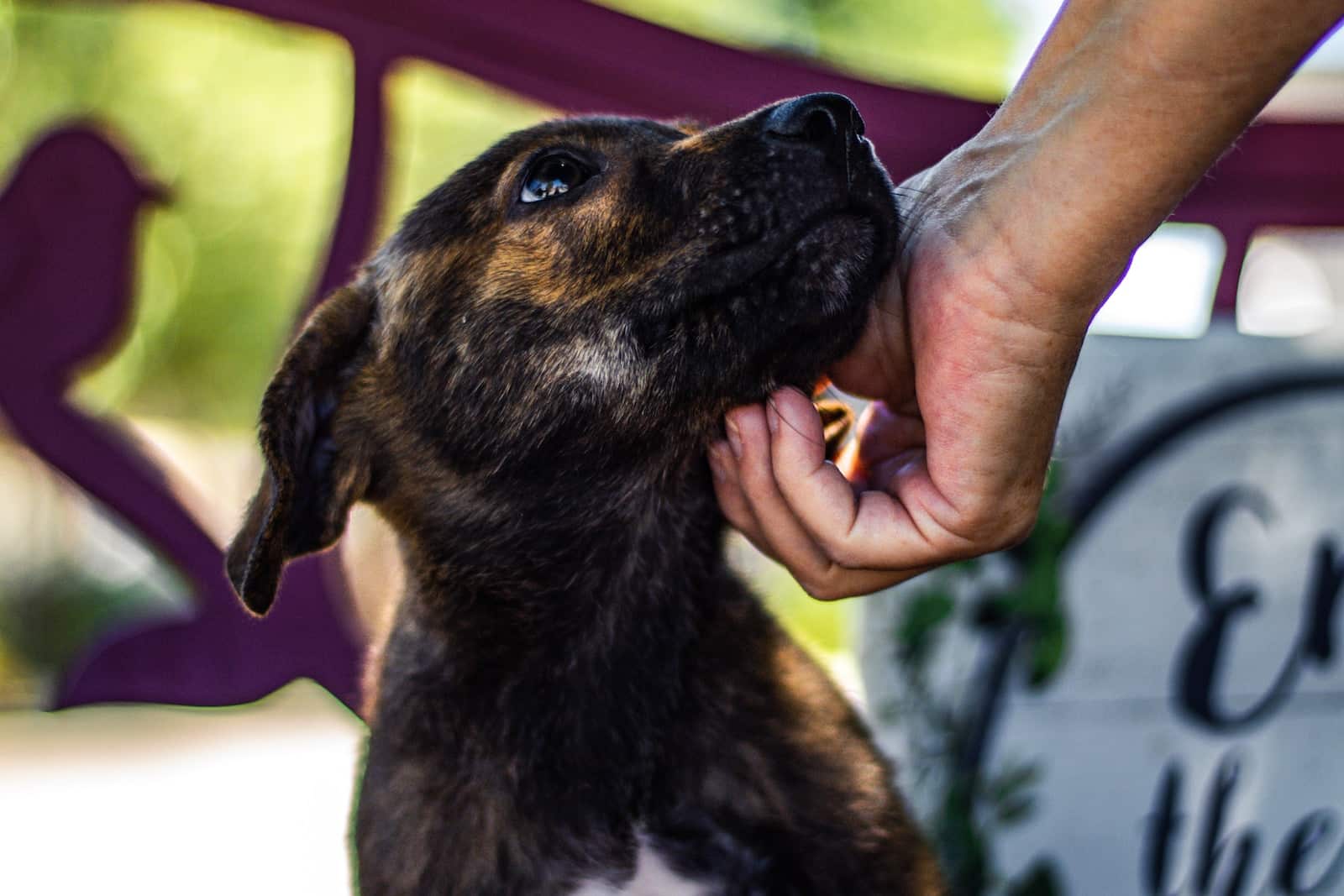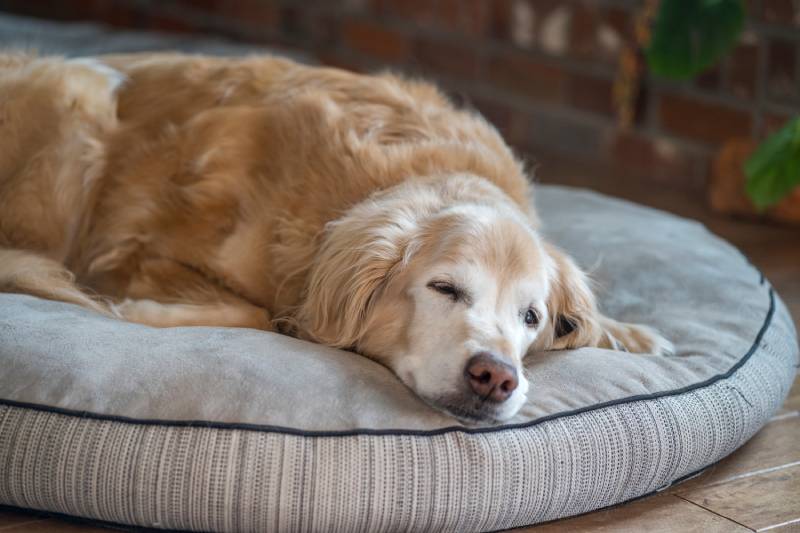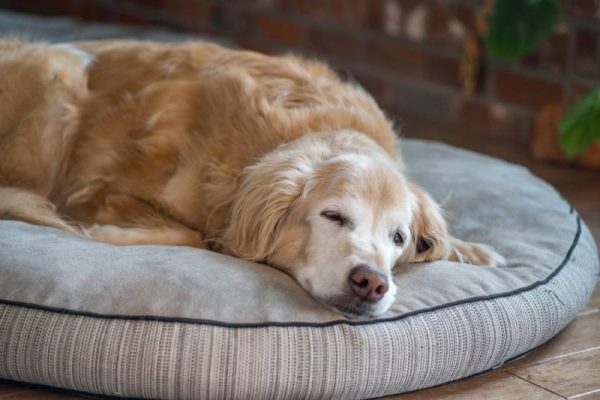Most of us have heard the term “dog years” used as a teasing reference. Traditional wisdom, though many times debunked, holds that every dog year equals about seven human years. But for those of us who are pet parents, do we truly grasp how “dog years” can affect our furry friends?
My last dog, a sweet Bichon mix named Sparky, came to us from a shelter when he was about a year old. Miraculously, he lived to be nearly 21! Not surprisingly, Sparky’s ability to function declined considerably toward the end of his life ― but I’m ashamed to admit that I didn’t always recognize how badly he was struggling. Much of this was due to the fact that I simply saw my dear old dog every single day. Unfortunately, a pet’s progressive, gradual degeneration over time can sometimes be trickiest for an owner to spot.
So now that my current rescue, Grant, just marked his 10th birthday (we designate April Fool’s Day as his annual celebration because he’s just an adorable huckster at heart), I’m very aware of age-related issues. Grant’s still pretty active and feisty, but as he’s advanced in years, I’ve often found myself wondering: When is a dog truly considered senior?
Many of the veterinary charts I’ve consulted (including the dog age chart used by Dogster) suggest a basic formula― that generally, canine aging moves along more rapidly during the first two years of a dog’s life, then deviates somewhat according to size. The year ratio works out to roughly 5:1 for small and medium breeds; 6:1 for large breeds; and 7:1 for giant breeds. In dogspeak, that means a 10-year-old Chihuahua would be about 64 in human years; whereas an English Mastiff would be approximately 80.
So the difference, it turns out, can be fairly substantial. That means it’s vitally important that we observe our dogs as they grow older, because age-related changes can be stealthy. Here are some things I’ve noticed as Grant and my other canine companions have aged. The good news is that once we recognize what’s happening, there are often many ways to help our furry friends remain comfy and spry throughout their golden years.
The 5 Changes to Look for When Dog Gets Older
As your dog ages, look for:
1. Changes in your dog’s activity level
In my own experience, there are two key areas to watch here. The first, a decline in daily energy, is fairly predictable; though some dogs exhibit this slowdown in more pronounced ways than others. Our Grant, for instance, still romps around like a puppy ― but where he used to have almost limitless stamina, now he tends to go all-out in shorter, more focused bursts. He also takes a lot more naps and rest breaks. To accommodate this, we generally take two or three brief walks instead of one long trek each day. During warmer months, we also modify the traditional morning jog to a more forgiving shuffle. And of course, his comfy throw pillow “snooze spot” is always ready and waiting when he returns.
The second area, overnight restlessness, may catch some pet parents off guard. In the case of my Sparky, he started pacing around during the night long before exhibiting any daytime loss of energy. We also noticed occasional overnight accidents on the carpet, and some random whimpering. There are a number of medical conditions that might contribute to this behavior, so always ask your vet if you notice changing patterns. If simple aging is truly the culprit, try putting pee pads or a towel down on any frequently visited “spots.” Placing pillow bolsters or a round infant play gate around Sparky’s general sleeping area also seemed to soothe him.

2. Changes in your dog’s weight
Just like all of us, dogs can begin to sneak on added pounds as they age. According to our vet, this extra heft can lead to diabetes, joint strain, even breathing troubles. Helping our pets maintain a healthy weight is one of the best ways we can safeguard their well-being. So to discourage all-day eating, we feed Grant a pre-measured food portion once or twice per day. We also monitor treat intake; focus on high-quality protein (even crunchy veggies!) as opposed to filler carbs. Plus, we keep him on a regular, moderate exercise regimen that includes periodic rounds of fetch ― his all-time favorite game.
3. Changes to your dog’s eyes
In both humans and dogs, the eye lens is normally translucent when we’re young. But an age-related change called lenticular sclerosiscan occur. This basically happens when the center of the lens becomes denser, resulting in a cloudy-grayish cast. Grant has had this condition for a few years, but our vet says it rarely impairs vision in a significant or harmful way. We do notice that Grant tends to bury his face behind a pillow or blanket when he sleeps these days, which can sometimes indicate a slight sensitivity to bright light. Or also just his typically feisty “hey guys, notice I’m sleeping here” attitude.
Some older dogs also develop cataracts, which cause a milky and vision-obscuring film to grow over the lens. Cataracts are not caused exclusively by age ― many times there’s a genetic link, or a connection with other ailments ― but when they do occur, they gradually impact vision and can result in total blindness. The good news is that your vet can successfully treat most cataracts with sight-restoring surgery. It’s always important to ask your vet if you notice changes in the appearance of your dog’s eyes, or if your dog seems to be having trouble locating familiar items.
4. Changes to your dog’s fur and nails
In addition to a dog’s fur graying or whitening around the muzzle (which, admit it, adds character!), fur and nails may also become somewhat dry and coarse with age. we like to supplement mealtime with a sprinkling of natural flax seed and coconut oil, both of which can provide essential fatty acids. In addition, to avoid splitting or splintering fragile nails, we’ve stopped trimming altogether and simply go with nail grinding and filing.

5. Changes in your dog’s behavior
When my Sparky entered his senior years, he gradually began acting more confused. Occasionally, it seemed like he didn’t recognize familiar faces or places. Behavioral changes like these can be due to an underlying medical condition, such as hypothyroidism in dogs. So even though Grant has yet to exhibit similar signs, we’ve made sure to schedule regular, hands-on vet checkups as he gets older. When issues are caught early, pets can often be helped with medication and/or simple lifestyle modifications.
One potential issue we’re aware of with Grant is the possibility of increased aggression. Grant was abused by different owners before finding his forever home with us, and he learned to protect himself by going on the offensive. He’s slowly “unlearned” this behavior, but older dogs can sometimes experience arthritis or other discomforts. They can also become forgetful, or startle more easily due to hearing or vision loss. As a result, routine stressors can contribute to increased irritability. We’re working with an animal behaviorist to help minimize potential issues as Grant gets older.
The takeaway? Talk with your vet about practical, proactive ways to keep your pup healthy and comfortable as the years advance. Together, you can help make every single “dog day” unforgettable.
Read more about caring for senior dogs:
- Are You Worried About Your Dog Getting Older? Are You Prepared?
- How Can We Help Senior Dogs as They Age? A Geriatrics Primer
- 5 Tips for Caring for Senior Dogs
Featured Image Credit: Yobab, Shutterstock










